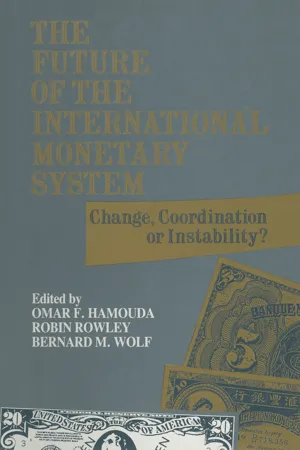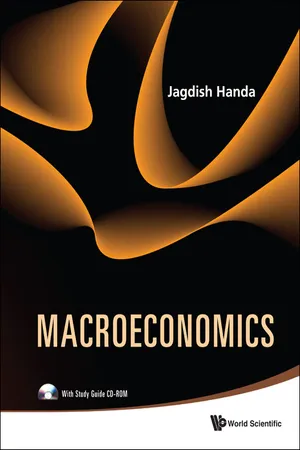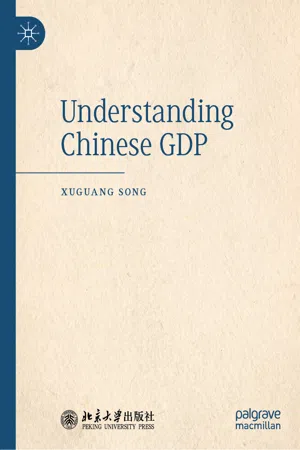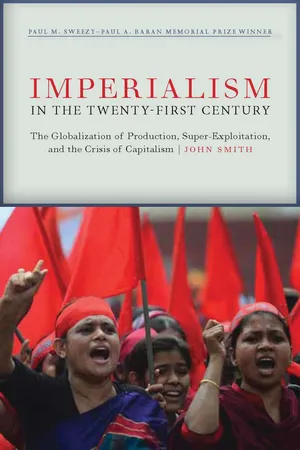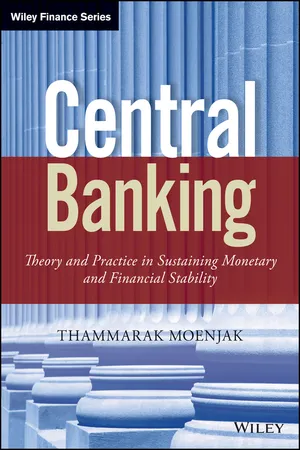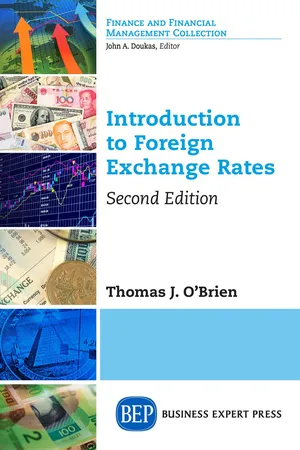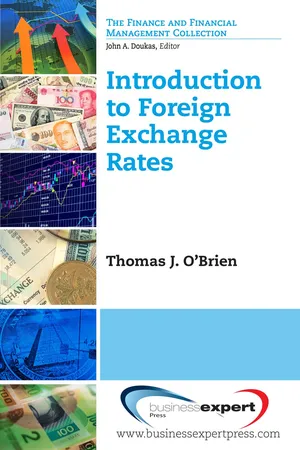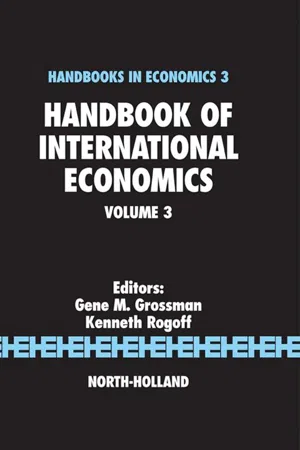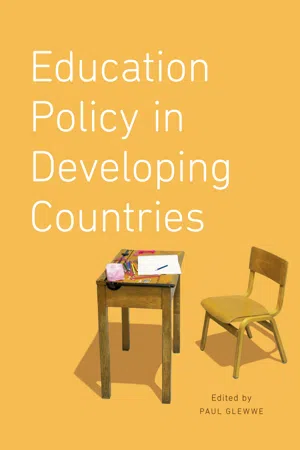Economics
Purchasing Power Parity
Purchasing Power Parity (PPP) is a theory used to compare the relative value of currencies by taking into account the cost of a similar basket of goods and services in different countries. It suggests that exchange rates should adjust to equalize the prices of identical goods and services in different countries. PPP is important for understanding international trade and investment.
Written by Perlego with AI-assistance
Related key terms
12 Key excerpts on "Purchasing Power Parity"
- eBook - ePub
The Future of the International Monetary System
Change, Coordination of Instability?
- Omar F. Hamouda, Robin Rowley, Bernard M. Wolf(Authors)
- 2016(Publication Date)
- Routledge(Publisher)
7 Purchasing Power Parity as a monetary standardRonald I. McKinnon and Kenichi OhnoFrom its initial formulation by Gustav-Cassel in the unsettling monetary aftermath of World War I, through the modern experience with fluctuating exchange rates since 1973, economists have been fascinated by the relationship between Purchasing Power Parity (PPP) and exchange rate equilibrium. Indeed, Cassel took it as a virtual truism that 'As long as anything like the free movement of merchandise and a somewhat comprehensive trade between two countries takes place, the actual rate of exchange cannot deviate very much from . . . Purchasing Power Parity' (Cassel, 1918, p. 413).However, the experience with floating exchange rates in the early 1920s, to be painfully relearned in the 1970s and 1980s, disabused people of the idea that the natural forces of international commodity arbitrage would be sufficient to align national price levels when exchange rates were not fixed. Since 1973, fluctuations in the important yen/dollar and mark/ dollar rates have been unexpectedly large, and seemingly as often away from PPP as towards it. This unpredictability of exchange rates, combined with the natural stickiness of the prices of domestically-produced goods invoiced in domestic currencies, inhibits arbitrage in international markets for manufactured goods so that cross-country prices of very similar products can differ greatly (Isard, 1977; Levich, 1986).To explain this anomaly, the modern theory (Frenkel and Mussa, 1980) has it that 'forward-looking' floating exchange rates are determined in asset markets – and continually move according to new information about, say, how policy in country A might change vis-à-vis - eBook - ePub
- Mark P. Taylor(Author)
- 2013(Publication Date)
- Routledge(Publisher)
locus classicus in Friedman and Schwartz (1963). Since the mid-1906s, the concept appears to have become absorbed, with varying degrees of strictness, into the way many economists think about international macroeconomics and finance. Thus, some 30 years ago, two leading international economists, Rudiger Dornbusch and Paul Krugman, could write: ‘Under the skin of any international economist lies a deep-seated belief in some variant of the PPP theory of the exchange rate’ (Dornbusch and Krugman, 1976). Twenty years later, another leading international economist, Kenneth Rogoff, could express more or less the same sentiment concerning his professional economist colleagues: ‘most instinctively believe in some variant of Purchasing Power Parity as an anchor for long-run real exchange rates’ (Rogoff, 1996). In fact, however, the two-decade gap in the dating of these quotations was a period during which views on the validity or otherwise of long-run PPP shifted a number of times, as we shall see.III. Purchasing Power Parity: The AlgebraA central building block of PPP is the law of one price (LOP). The LOP states that once converted to a common currency, the same good should sell for the same price in different countries. In other words, for any good i,where Pi is the domestic price for good i, is the foreign price for good i, and Si is the nominal exchange rate expressed as the domestic price of the foreign currency. This expression states that the same good should have the same price across countries if prices are expressed in terms of the same currency. The LOP implicitly assumes that there is perfect competition, that there are no tariff or other trade barriers, and no transportation costs. In practice, due to some or all of these market frictions applying in the real world, the law cannot hold exactly, even if agents assiduously sought to exploit all profitable arbitrage opportunities.Absolute - Ashima Goyal(Author)
- 2016(Publication Date)
- Routledge India(Publisher)
Purchasing Power Parity and the exchange rateWater finds its own level.5.1 Introduction
In Chapter 4 , we took the expected nominal exchange rate to be given exogenously. In this chapter, we begin to examine more carefully what determines equilibrium real, and therefore expected nominal exchange rates.Trade arbitrage between any two countries should lead to a nominal exchange rate that is proportional to the relative price levels of the two countries. This is known as the Purchasing Power Parity (PPP) nominal exchange rate. PPP, thus, links the nominal exchange rate to relative price levels. It implies the bilateral exchange rate between two countries is the ratio of their price levels. The concept has been known for centuries, although it was given its modern name by Gustav Cassel in 1918.1 Although there is little empirical support for PPP, it serves as a benchmark and is a major component especially of the monetary theories of the exchange rate.In this chapter, we explain absolute and relative PPP and the underlying law of one price (LOOP). Then, we survey some of the empirical tests of these theories, before turning to reasons why they may fail to hold.The remainder of the chapter is structured as follows: Section 5.2 derives PPP and its variants from trade arbitrage. Section 5.3 reports on tests of trade arbitrage and Section 5.4 on why PPP is difficult to establish empirically, before Section 5.5 concludes with a summary of the chapter contents. Appendix 5.A.1 has a formal derivation of the Balassa-Samuelson (BS) result on why the real exchange rate is more appreciated in richer countries.5.2 Trade arbitrage
Just as arbitrage determines equilibrium under UIP, trade arbitrage affects the real equilibrium value of a currency. PPP exchange rate between two currencies is the rate, which would equate the two relevant national price levels if they were expressed in a common currency. That is, the purchasing power of a unit of one currency would be the same in both economies. Since there is no difference between domestic and international purchasing power, parity holds. Under trade arbitrage, a good should have the same price in the same currency in different countries, so that no opportunity for trade arbitrage is left. This is expected to give the value of the nominal exchange rate in the long run. The real exchange rate is then obtained by deflating the nominal exchange rate by relative prices, since this gives the relative price of the foreign good basket in terms of the domestic basket. The real exchange rate is the relative price of two output baskets.- eBook - ePub
Exchange Rate Economics
Theories and Evidence
- Ronald MacDonald(Author)
- 2007(Publication Date)
- Routledge(Publisher)
2Purchasing Power Parityand the PPP puzzle1In this chapter and the next we consider the proposition of Purchasing Power Parity (PPP). This concept has been widely used to measure the equilibrium values of currencies and is often the one an economist will first turn to when asked if a currency is over-or undervalued or not. PPP is also a relationship which underpins other exchange rate models, such as the monetary model considered in Chapters 4–6 . In his comprehensive 1982 survey of the PPP literature, Jacob Frenkel referred to the ‘collapse’ of the PPP hypothesis. It is therefore perhaps surprising that since Frenkel’s survey there has been a huge resurgence of interest in the PPP hypothesis. Much of this interest has arisen because of the development of new econometric methods, such as cointegration and non-stationary panel methods, and the application of these methods to testing PPP. The recent PPP literature has produced the so-called PPP puzzle (Rogoff 1996), which concerns the reconciliation of the high short-term volatility of the real exchange rate with the slow mean reversion speed of the real exchange rate. As we shall see in succeeding chapters, the volatility of the real exchange rate can be explained by, inter alia, speculative bubbles, portfolio effects and liquidity effects. The PPP puzzle arises because if it is indeed, say, liquidity effects which drive real exchange rate volatility then the mean reversion speed of the real exchange rate would be expected to be relatively rapid (standard macro-theory suggests that in the presence of sticky prices, the real effects of liquidity shocks on real magnitudes should be dissipated after around 2 years), but in practice mean reversion speeds are painfully slow.2In this chapter we start by outlining the PPP hypothesis and then go on to survey the extant empirical evidence on PPP. In terms of the latter, we consider first what we refer to as ‘the early evidence’, that is, empirical estimates conducted in the 1960s through to the 1980s, and then go on to consider more recent empirical tests which rely largely on unit root and cointegration testing. In the next chapter, we focus on the rich variety of explanations offered in the literature to explain the PPP puzzle, and particularly the slow mean reversion speed. These explanations range from the pricing to market behaviour of multinational firms, the role of ‘real’ variables, such as productivity differentials and expenditure effects, and frictions due to transaction costs. - eBook - ePub
Macroeconomics
(With Study Guide CD-ROM)
- Jagdish Handa(Author)
- 2010(Publication Date)
- WSPC(Publisher)
• The integration of national economies into a world economy is known as globalization. Its actual form is still a truncated one.In terms of the short-run macroeconomic models, taking account of the existence of foreign trade and capital flows modifies the assumptions of our earlier closed economy models, so that the specifications of the expenditure and monetary sectors for the open economy change. These are dealt with in the next chapter.KEY CONCEPTSPurchasing Power ParityInterest rate parityThe demand for the domesticcurrency (dollars) in the foreignexchange marketsThe supply of the domesticcurrency (dollars) in the foreignexchange marketsElasticity of net exportsThe J curveFixed versus flexible exchange ratesHot moneyInternational MonetaryFund (IMF)The Bretton Woods SystemSpecial Drawing Rights (SDRs)IMF conditionalityGlobalizationMercantilismTruncated globalization, andThe IMF as a central bank.SUMMARY OF CRITICAL CONCLUSIONS• Purchasing Power Parity occurs under perfect commodity flows without transactions costs and is the doctrine that the real exchange rate between countries will be unity. Relative Purchasing Power Parity is the doctrine that the depreciation of the domestic currency in terms of another will equal the difference between the inflation rates of the relevant countries.• Interest rate parity occurs under perfect capital flows and is the statement that, under fixed exchange rates, the domestic and foreign rate of return on riskless assets will be identical. Under flexible exchange rate, the domestic interest rate will (approximately) equal the foreign one less the expected rate of appreciation of the domestic currency (alternated stated as: plus the expected rate of appreciation of the foreign ones).• Investors in secure economies seem to possess strong home country preference, with the result that the portfolios held are overwhelming composed of domestic stocks and bonds. Consequently, the correlation between domestic saving and investment is extremely high, contrary to the implications of perfect capital flows resulting in IRP. - eBook - ePub
- Xuguang Song(Author)
- 2019(Publication Date)
- Palgrave Macmillan(Publisher)
PPP is not only important in international macroeconomics and traditional exchange rate determination theory but has also become the theoretical basis of the ICP. In economics, PPP is categorized into absolute and relative PPP. The theoretical foundation of absolute PPP is the law of one price, which means that one commodity must be sold at the same price in different countries within a fully competitive market without transportation cost and trade barriers. This law affirms the validity of the foreign exchange market and holds that arbitrage space can disappear within a very short period. According to the law of one price, the absolute PPP can be expressed as follows: where Superscript 0 represents the countries or regions that are the basis for comparison. For example, the World Bank selects the United States as the base for comparison, whereas the Asian Development Bank (ADB) selects Hong Kong. Superscript i represents the countries or regions participating in the comparison. A total of k countries or regions have participated in comparison. The subscript represents the commodities or services participating in the comparison. A total of n commodities or services are considered. P 0 and P i represent the price vectors of base countries (regions) and countries (regions) in comparison, respectively. When calculating the domestic and foreign price levels, the commodity baskets and the weights of their commodities should be the same. Absolute PPP theory holds that the equilibrium exchange rate is determined by the purchasing power of two countries’ currencies. Clearly, the above conditions cannot be met in reality. Dornbusch (1976) proposes that trade barrier and information asymmetry not only lead to differences in the prices of commodities in various regions but also restrict arbitrage and hinder the establishment of the PPP theory. In this case, we put forward a theory of relative PPP, which enables the existence of a certain trade cost - eBook - ePub
Imperialism in the Twenty-First Century
Globalization, Super-Exploitation, and Capitalism's Final Crisis
- John Smith(Author)
- 2016(Publication Date)
- Monthly Review Press(Publisher)
6 The Purchasing Power Anomaly and the Productivity Paradox I n the early 1990s, the World Bank and IMF started using PPP exchange rates—hypothetical exchange rates that equalize the prices of goods and services between economies—to enable international comparisons of wages, output, per capita GDP, spending on health. The size of the required adjustment to market exchange rates is substantial, and a great deal rests on the validity and accuracy of the Purchasing Power Parity (PPP) conversion. Quite simply, without PPP exchange rates we would have no measuring stick with which to compare GDP, real wages, and consumption levels between different nations. The previous chapter examined some of the main sources of inaccuracy, bias, and distortion in the use of PPP exchange rates to measure the real incomes of workers and poor people. In this chapter we examine why the purchasing power anomaly exists in the first place, discovering that the key factors—restrictions on the free movement of labor across borders and wide variations in the rate of exploitation resulting from the high degree of autonomy of wages from productivity—are also key conditions for the rise of global labor arbitrage. WHY DO MARKET EXCHANGE RATES UNDERVALUE “SOFT” CURRENCIES? How to correct for the purchasing power anomaly is an unavoidably complex practical question. Of a different order entirely is the question: Why does the purchasing power anomaly exist between hard-currency and soft-currency nations? The ubiquity and persistence of this anomaly indicates that it cannot be explained by contingent or episodic causes such as protectionism, movements of hot money, government deficits and so forth, and that its causes must be sought in structural characteristics concerning the way in which Southern nations are inserted into the global economy - eBook - ePub
Central Banking
Theory and Practice in Sustaining Monetary and Financial Stability
- Thammarak Moenjak(Author)
- 2014(Publication Date)
- Wiley(Publisher)
32 This definition allows for the needs of a current account that is not balanced and structural net capital inflows or outflows. In practice, however, this definition also suffers from the uncertainty and time lags of the feedback loop between the exchange rate and the current account (and the accompanying capital flows). Furthermore, it is difficult to determine the optimal level for the country’s current account and capital flows.Exchange Rate That Is Consistent with PPP
The exchange rate that equates overall domestic price levels with international price levels, or the exchange rate that reflects PPP, is another candidate for the concept of an equilibrium exchange rate.33 The PPP exchange rate would reflect the value of the domestic currency in its ability to purchase an identical basket of goods and services across borders.In practice, however, many goods and services cannot be traded across borders, and thus arbitrage activities that are supposed to equate domestic and international prices and ensure that the exchange rate accurately reflects PPP might not exist. Furthermore, while PPP is useful in comparing international standards of living, it does not reflect the country’s external balance.Exchange Rate That Equates Export Prices with Those of Trading Partners’
Another candidate for the equilibrium exchange rate is one that equates one country’s export prices with those of its trading partners.34 - Thomas J. O'Brien(Author)
- 2016(Publication Date)
- Business Expert Press(Publisher)
CHAPTER 4 Extensions of Purchasing Power ParityThis chapter extends the connection between goods prices and foreign exchange (FX) rates. First, we cover how inflation rates affect intrinsic FX rates. We’ll apply this idea to understand how FX misvaluations occur when FX rates are fixed. Second, we cover an adjusted version of absolute Purchasing Power Parity (APPP), based on an economy’s per-capita gross domestic product (GDP).Relative Purchasing Power ParityThere is an extension of the international law of one price (ILOP) and APPP conditions that has to do with FX rate movements over time. This dynamic version of the theory relates FX rate changes to relative inflation rates, where “inflation rate” refers to the percentage change in goods prices. The dynamic version is known as the relative Purchasing Power Parity (RPPP) condition. To explain the RPPP idea, we’ll use wheat as the representative good, so the percentage change in the price of wheat in an economy represents the inflation rate.Denote the U.S. inflation rate as p$ and the U.K. inflation rate as p£ , noting our convention to use lower case letters for percentage changes. If the bushel prices of wheat at time 0 are and , then the bushel prices of wheat at time 1 will be and , respectively. It may help to think of the inflation rates as pertaining to a unit of time, say, 1 year. For example, assume wheat prices at time 0 of = $2.00 per bushel in the United States and = £1.00 per bushel in the United Kingdom, and that the U.S. inflation rate is 6 percent (per year) and the U.K. inflation rate is 3 percent (per year). Then the new price of wheat in a year will be $2.00(1.06) = $2.12 in the United States and £1.00(1.03) = £1.03 in the United Kingdom.The APPP condition says that the spot FX rate at time 0 should be = $2.00/£1.00 2.00 $/£, and that the new spot FX rate at time 1 should be = $2.12/£1.03 2.06 $/£. Despite the appreciation of the pound (and the depreciation of the U.S. dollar), the U.S. dollar/pound spot FX rate is correctly valued in terms of wheat prices at both the beginning and ending times. That is, if the APPP condition holds at both times, there is no FX misvaluation in purchasing power terms, despite the change in the nominal FX price of the currencies. The RPPP condition, in terms of intrinsically correct spot FX rates at time 0 and time N, can be expressed as Equation 4.1 .1- eBook - ePub
- Thomas J. O'Brien(Author)
- 2013(Publication Date)
- Business Expert Press(Publisher)
mercantilism, where countries vie to “win,” economically, over others in international trade. Instead, in the integrated global economy, countries’ economies are interdependent, and trade becomes imbalanced at times as part of the natural development of the global economy.Another reason that concern over trade imbalances has subsided somewhat is the global use of hard currencies. For example, U.S. dollars sent to countries outside the United States for imports are not always returned for gold or official FX reserves. Instead, U.S. dollars often serve more or less as an international currency. If U.S. officials were to try to create a depreciation of the U.S. dollar to correct a trade deficit, confidence in the U.S. dollar as international currency would drop.2Absolute Purchasing Power Parity
The Absolute Purchasing Power Parity (APPP) condition is an economic theory of the long-run intrinsic FX rate. The theory is similar to the ILOP principle, but relates to general baskets of consumption goods, including both tradable and nontradable goods. That is, the difference between the ILOP and the APPP condition is that the ILOP condition refers to parity between FX rates and tradable goods prices, whereas the APPP condition refers to parity between FX rates and a general index - eBook - ePub
- G.M. Grossman, Kenneth Rogoff(Authors)
- 1997(Publication Date)
- North Holland(Publisher)
Indeed, much of the post World War I debate over re-establishing pre-war parities, which provided the genesis of PPP theory, implicitly referred to relative PPP. Of course, among low inflation economies, there is little more reason to believe that (2.3) will hold than (2.2), since real shocks can lead to changes in the relative prices of different goods baskets. Across countries with very different inflation rates, however, one might expect condition (2.3) to hold even when (2.2) does not. Indeed, much of economists' faith in PPP derives from a belief that over most of the past century, price level movements have been dominated by monetary factors. If price index movements are dominated by monetary shocks, and if money is neutral in the long run, then it won't matter if the two baskets being compared are not the same; relative PPP should still hold (approximately). Of course, economists like to use PPP as a frame of reference not just for hyperinflationary economies, but for any pair of economies. Most of this section will be concerned with straightforward tests of PPP, but later in Section 3, we shall consider various adjustments that have been proposed to try to give PPP more meaning for low-inflation economies. 2.2 Stage one: Simple Purchasing Power Parity as the null hypothesis In Cassel's (1922) view, PPP was seen as a central tendency of the exchange rate, subject to temporary offset, and not a continuously-holding equivalence. Much of the work on PPP through the 1970s [see Officer's classic (1976a) survey] recognizes the importance of temporary disturbances to PPP, in principle. But early formal empirical analyses were limited by the absence of statistical and theoretical tools for distinguishing between short-run and long-run real effects - eBook - ePub
- Paul Glewwe, Paul Glewwe(Authors)
- 2013(Publication Date)
- University of Chicago Press(Publisher)
We follow the same methodology consistently in all J-PAL cost-effectiveness analyses. 8.4.3. Currency and Exchange Rates. Many evaluations report program costs in US dollars, but some also report costs in local currencies, and where costs are gathered from a number of sources there may even be a mixture of units. It is obvious that all programs being evaluated must have their costs exchanged into a single currency, but the choice of an exchange rate has significant implications for the interpretation of the results. When standard (i.e., market) exchange rates are used, the resulting estimates represent the cost effectiveness of that program assuming the relative price levels for different goods in the country in which it was originally implemented. The difficulty in using standard exchange rates is that there are significant differences in the relative prices of different goods across countries. Purchasing Power Parity (PPP) exchange rates adjust somewhat for the different price levels in different countries, which are driven by the higher prices of nontradables in wealthier countries. But since PPP is based on a standard basket of goods and services, it does not completely adjust for the different relative prices of the goods and services used in a particular program across countries, because of the variations in factor endowments across countries. For example, skilled labor is far cheaper in India than in Mexico, so if a program that is more intensive in skilled labor is piloted in Mexico, it will look less cost effective than a similar program piloted in India
Index pages curate the most relevant extracts from our library of academic textbooks. They’ve been created using an in-house natural language model (NLM), each adding context and meaning to key research topics.
